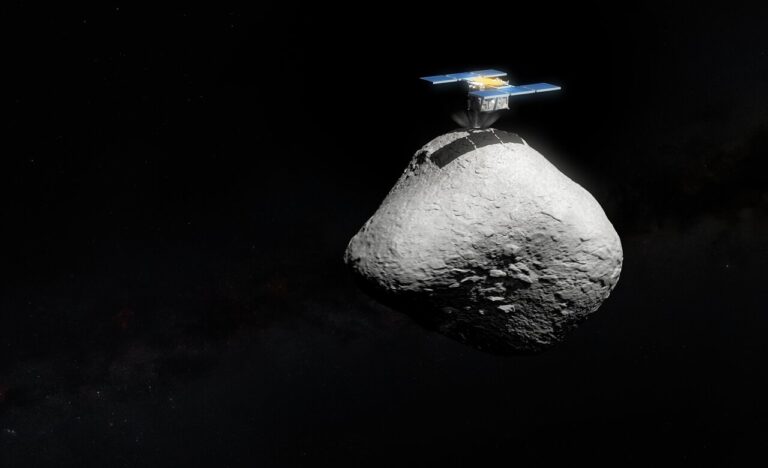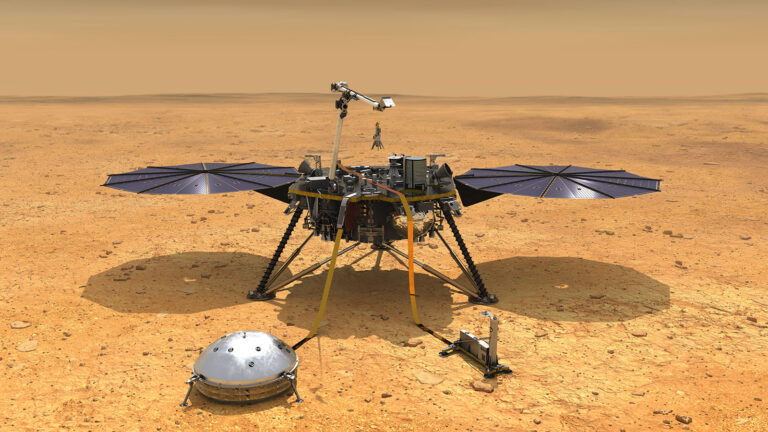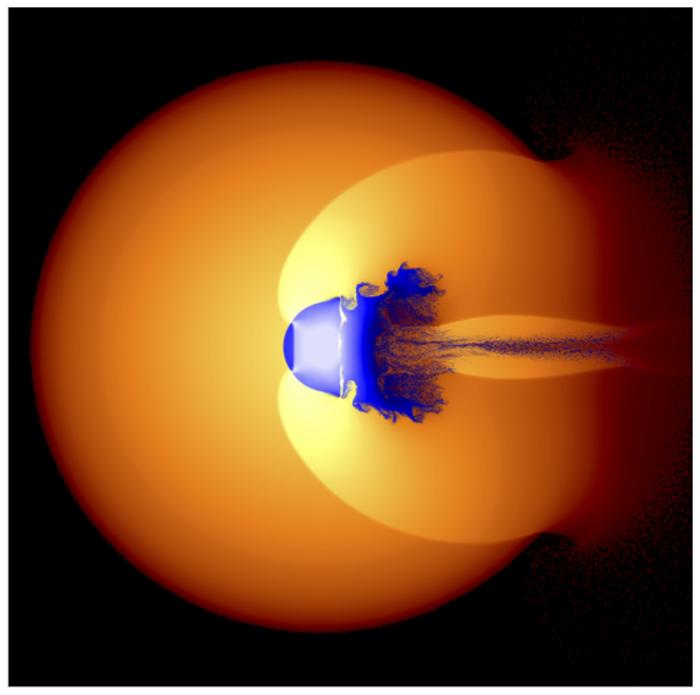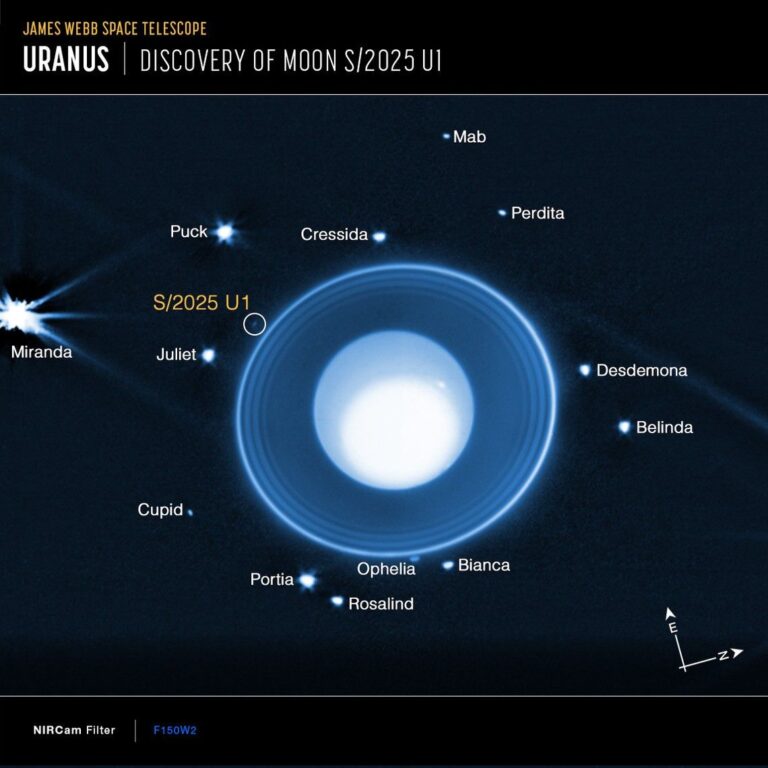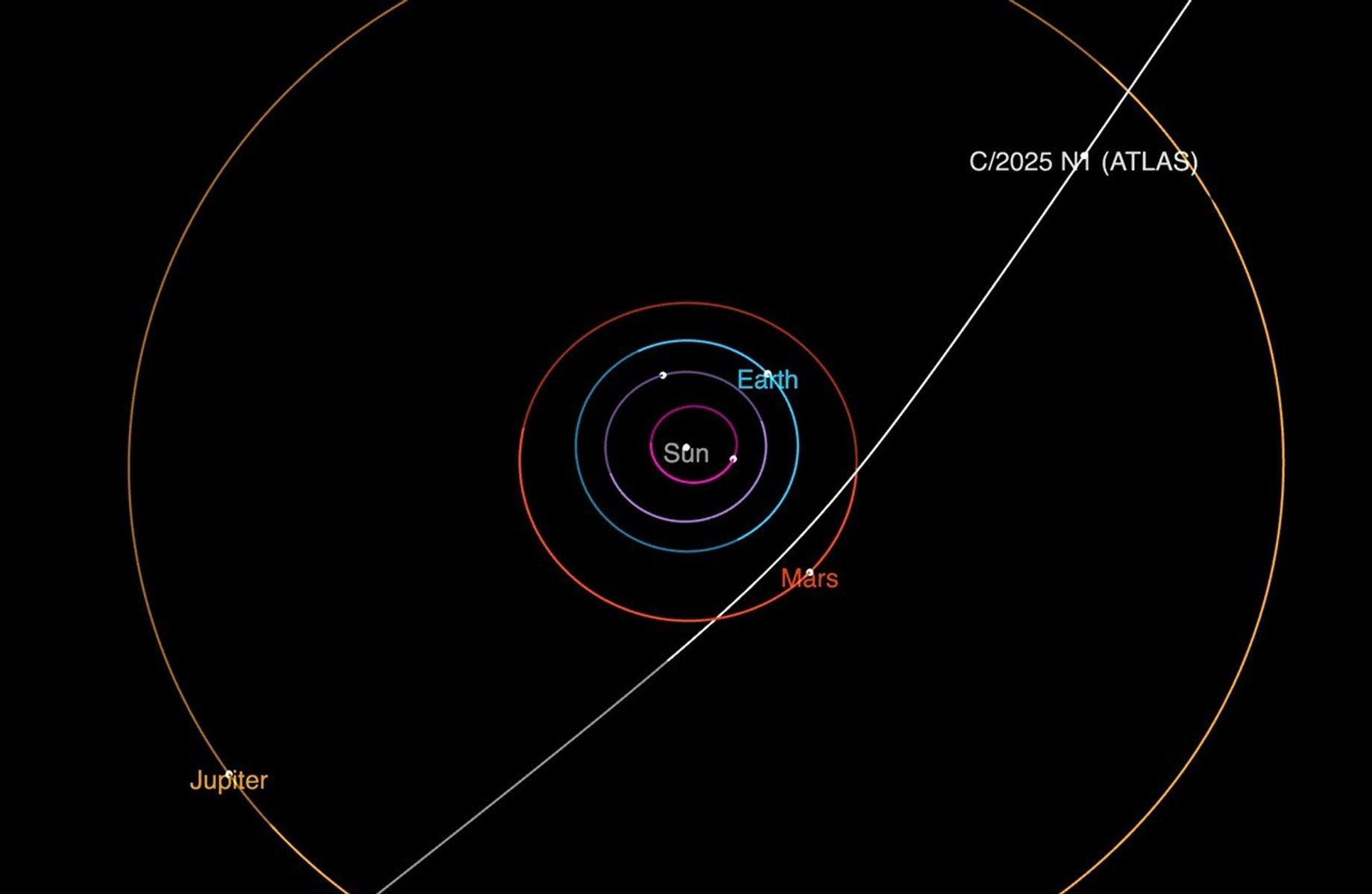
Key Takeaways:
- 3I/ATLAS is only the third interstellar object ever detected.
- It poses no threat to Earth.
- The comet is currently dim, requiring a telescope to see.
- It will be closest to the sun in late October.
A rare visitor from beyond the solar system has just been found streaking through our cosmic neighborhood. On July 1, 2025, the NASA-funded Asteroid Terrestrial-impact Last Alert System (ATLAS) telescope in Rio Hurtado, Chile, detected an object now confirmed to have interstellar origins. Initially tagged A11pl3Z, it has been officially designated 3I/ATLAS and C/2025 N1 (ATLAS) — only the third known interstellar object after 1I/ʻOumuamua (2017) and 2I/Borisov (2019).
Approaching from the direction of Sagittarius, 3I/ATLAS is currently 420 million miles (670 million km) from the Sun, inside Jupiter’s orbit. It poses no threat to Earth, as it won’t get closer to our planet than 1.6 astronomical units, or about 150 million miles (240 million kilometers). (One astronomical unit, or AU, is the average Earth-Sun distance of 93 million miles or 150 million km.)
Shortly after its discovery, the Minor Planet Center issued an alert for additional observations. Signs of cometary activity were identified within 24 hours, earning it the designation C/2025 N1. Pre-discovery images from three ATLAS telescopes and the Zwicky Transient Facility at Palomar Observatory trace back as early as June 14, as reported by NASA.
The comet’s path
Currently estimated at 12 miles (20 km) in diameter, the comet is now around 18th magnitude, about 2.3 million times dimmer than 2nd-magnitude Polaris. That’s faint, but within the photographable range of telescopes with apertures of 6 to 8 inches (150 to 200 millimeters) according to The Virtual Telescope Project.
According to the latest calculations, it will pass closest to Mars on Oct. 2 (18.6 million miles [30 million km]), reach perihelion — the closest point to the Sun — on Oct. 29 (1.36 AU, or 126 million miles [203 million km]), and make its closest approach to Earth on Dec. 19 (167.8 million miles [270 million km]). The comet should remain observable into September, then vanish into the Sun’s glare before reemerging by early December.
See it tonight
The Virtual Telescope Project will host a livestream of 3I/ATLAS tonight, July 3, beginning at 22:00 UTC (6 P.M. EDT), offering skywatchers a rare look at this interstellar interloper as it speeds through our solar system.
If you want to try snagging a photo for yourself, 3I rises in the east tonight around 7:30 P.M. local daylight time from mid-latitudes, before the summer Sun has set. It’s now located in northwestern Sagittarius, which tracks low through the southern sky for most of the U.S. The region reaches its highest point in the southern sky around local midnight.
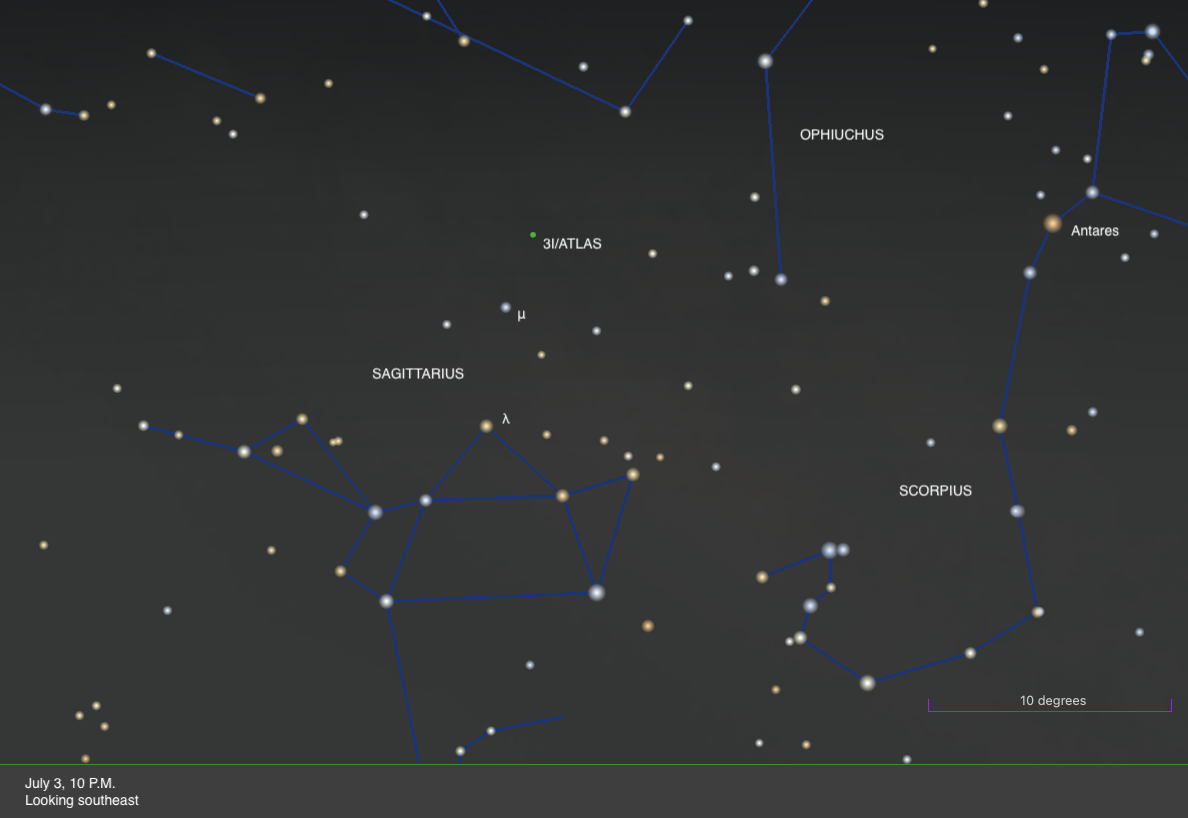
By 10 P.M. local daylight time tonight, our interstellar visitor will stand roughly 23° high in the southeast, some 8.9° above (north-northwest) of Kaus Borealis (Lambda [λ] Sagittarii), the star marking the top of the Teapot asterism’s lid. For a closer signpost, use 4th-magnitude Mu (μ) Sgr — 3I is some 3.5° northwest of this star. Given is current magnitude of 18; the Virtual Telescope Project site suggests telescopes at least 6 inches in aperture are needed to photograph the newly discovered visitor.
3I is moving westward through Sagittarius at a rate of about half a degree per day. It should cross into Ophiuchus on July 13 and continue working its way west, ending the month about 4.5° southwest of Eta (η) Ophiuchi. You can look up its current position at any time on either theskylive.com or using JPL’s Horizons website. Note that the July Full Moon on the 10th will certainly interfere with observing fainter targets such as this around the end of next week, particularly as it arcs through the southern sky as well.
According to JPL, 3I’s current magnitude is 17.8 and if no additional activity occurs, it will likely brighten to 16th magnitude by the end of the month. However, note these are estimates based on currently available information and may change, particularly if cometary activity occurs. Comets are notoriously unpredictable, and our experience with interstellar visitors is limited, so we’ll all have to stay tuned as more observations and details emerge.



